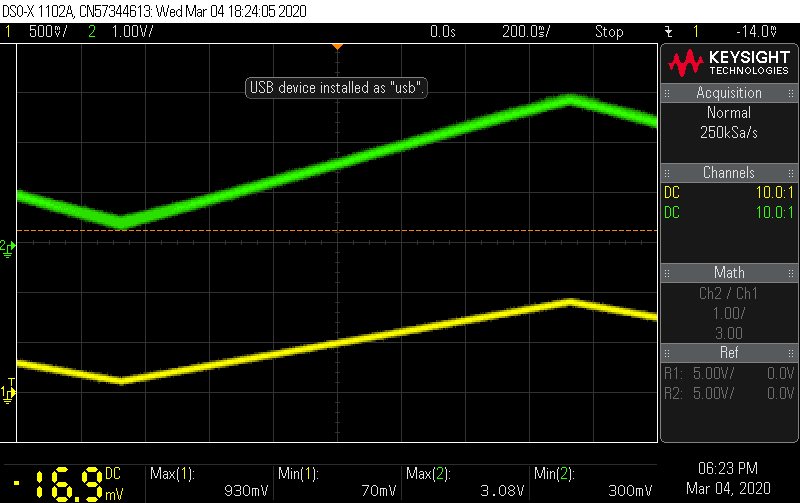Other Parts Discussed in Thread: DAC53401, LM73605, LM73606
I am trying to control the output voltage of the LMZM33604 by supplying an adjustable voltage to the SS/TRK pin.
It seems to work but I am confused by the results.
The LMZM33604 feedback divider is set for a 3.3V output. I expect that will set the maximum output level regardless of the TRK voltage.
I have a DAC53401 connected to the SS/TRK pin. It can sink the 2µA. It can also be programmed to produce a triangle wave. I captured the input and output waveforms. The yellow waveform is the DAC output at .5V/div. The green is the output of the module at 1V/div. I put a 10Ω load across the output.
It seems to work, but the gain appears to be ~ 3.2x.
Is that what I should expect? I guess I anticipated a gain of 1. The data-sheet does not suggest what the relationship should be. Another answered question on E2E for the LM73605 controller says to expect a gain of 2.



